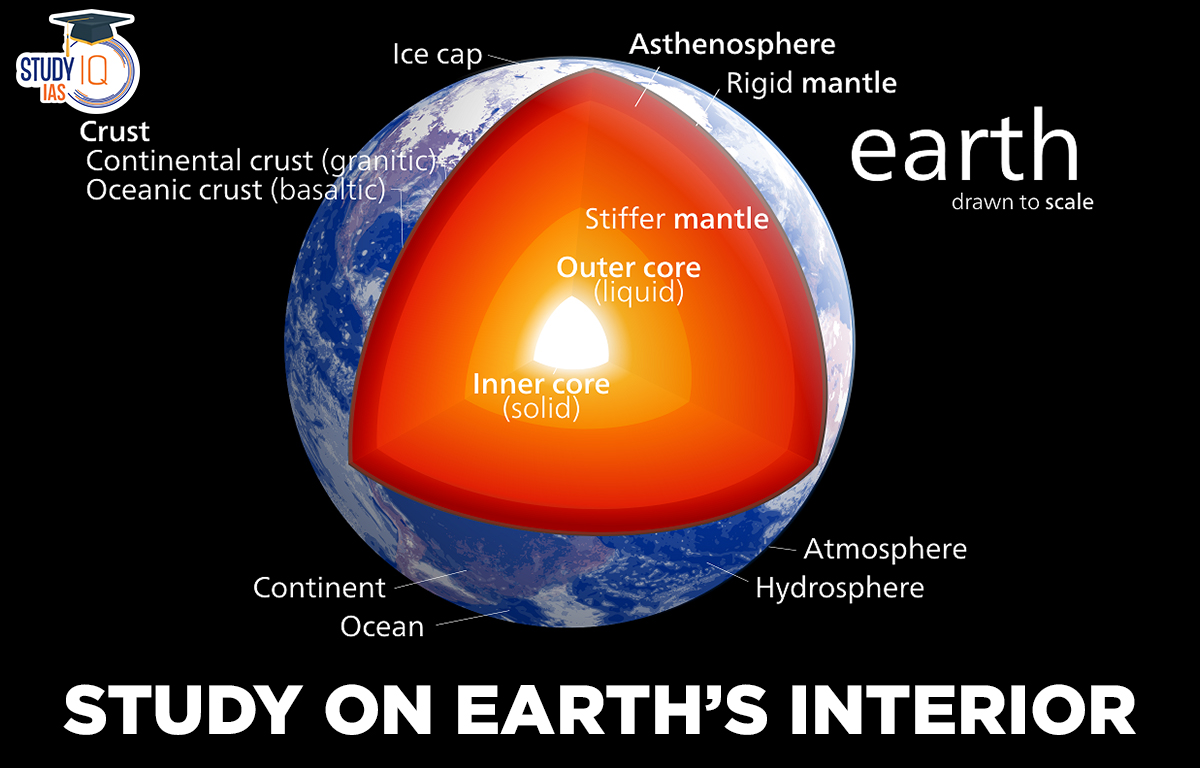Table of Contents
Context: Earth’s inner core has stopped spinning faster than the planet’s surface and might now be rotating slower than it, according to a study published in the journal Nature Geoscience.
Key Highlights of Study on Earth’s Interior
- Rotation of the Earth’s inner Core: The study stated that the inner core rotates, relative to the Earth’s surface, back and forth, like a swing.
- “One cycle of the swing is about seven decades,” the authors said.
- The inner core started rotating slightly faster than the rest of the planet in the early 1970s, the study said.
- But it had been slowing down before coming in sync with Earth’s rotation around 2009, it added.
- There has been a “negative trend” since, the study said, meaning the inner core is now rotating slower than the surface.
- The researchers predicted the next change would occur in the mid-2040s. They said this rotation timeline roughly lines up with changes in what is called the “length of day”— small variations in the exact time it takes Earth to rotate on its axis.
- Significance of the study: Exactly how the inner core rotates has been a matter of debate between scientists— and the latest research is expected to prove controversial.

Earlier Debates and Discussions on the Rotation of the Earth’s Inner Core
- Differential rotation: One of the main debates is whether the inner core rotates as a solid body or if it has a slight “wobble” or “swing” as it rotates, known as differential rotation.
- Seismic data has shown that the rotation rate of the inner core may not be uniform, and it may rotate at different speeds in different directions.
- Super rotation: It is the phenomenon where the inner core completes one rotation slightly faster than the Earth’s surface completes one rotation.
- There are multiple hypotheses, such as the interaction between inner and outer core, that could be the cause of the super rotation.
What are the various sources of evidence that scientists use to study the Earth’s interior?
- Seismic data: Seismic waves generated by earthquakes and other natural phenomena can provide information about the composition and structure of the Earth’s interior.
- Gravitational and magnetic data: Measurements of the Earth’s gravity and magnetic field can also provide insights into the interior.
- Heat flow: The amount of heat flowing out of the Earth can provide information about the heat generation and the thermal structure of the Earth’s interior.
- Mineralogy and geochemistry: The study of the chemistry and mineralogy of rocks and minerals can provide information about the composition of the Earth’s interior.
- Remote sensing: The study of the Earth’s surface and atmosphere can also provide clues about the interior through the study of topography, geology, and geophysics.
- Drilling: The study of the material brought up by drilling the earth’s crust can provide information about the composition of the earth’s interior.


 Light Weight Modular Missile (LMM) — I...
Light Weight Modular Missile (LMM) — I...
 Species Survival Commission (SSC) – IU...
Species Survival Commission (SSC) – IU...
 Global Hunger Index (GHI) 2025: India Ra...
Global Hunger Index (GHI) 2025: India Ra...




















